I’ve seen it happen many times. A small team wants to grow fast, but finding contacts one by one takes forever. So they try an email extractor tool. Suddenly, they have hundreds of new addresses to reach out to, and it feels like growth has finally started.
I get the appeal. These tools can pull emails from websites, search results, or social networks in minutes. But the truth is, extraction is only the first step. A list of names isn’t the same as a list of ready buyers.
Many emails are risky or too old to use.
That’s why the real work begins after extraction. Cleaning, verifying, and personalizing matter more than how many emails you collect.
In this guide, I’ll show what extractors do, why teams use them, and how to stay safe and legal when turning raw lists into real sales results.
What email extractor software does
At its core, email extractor software searches the web and pulls email addresses from public places. Some scan websites and contact pages. Others go through search results or social media. A few even connect with your CRM to match company names with possible contacts.
The idea is simple: find as many emails as possible, fast. Most tools let you type a keyword or a company name, and they return a list of related addresses. You can often export these lists into a spreadsheet or upload them straight into your outreach tool.
For sales or marketing teams under pressure to grow, this sounds like a shortcut. You can go from zero to a few thousand leads in a few minutes.
But these lists aren’t always clean. Some contacts are outdated, others belong to people outside your target market, and many turn out to be generic inboxes like info@ or sales@.
In short, extractors collect data, but they don’t tell you if those people are relevant or even interested. That’s where research and verification come in, also known as the part most beginners skip, and where the real difference starts to show.
Why businesses use email extractors
When I talk with founders or SDRs, their reasons for using email extractors are almost always the same.
They’re busy and they need fresh contacts fast. Manual research takes too long. Searching LinkedIn, checking websites, and copying emails one by one can easily eat up a full workday.
With an extractor, you can generate leads while you sleep. Type a few keywords, hit start, and by morning you might have hundreds of addresses ready to use.
For small teams, that speed feels like relief. You finally have something to hand over to your sales reps. The list looks full, the pipeline looks busy, and it seems like progress. Some even treat it as a backup plan when other lead generation efforts slow down.
There’s another reason: cost. Compared to hiring a lead generation agency, extractors feel affordable. Many tools start with free trials or low monthly plans, which makes them attractive for startups and solo entrepreneurs testing their first sales and marketing strategies.
So yes, these tools save time and give a sense of motion. But that’s only the surface. The real question isn’t how fast you can find emails but how many of them belong to people who might actually buy.
The caveats – email extraction risks you can’t ignore
Most email extraction tools collect both public and outdated information. You might find email accounts that no longer exist, or contact info that belongs to someone who left the company years ago. When you send to these addresses, you get bounces. And that can damage your sender reputation fast. Even the best email marketing platforms can’t fix a list full of invalid contacts.
Then there’s the legal side. Scraping LinkedIn email extraction data or pulling email data from sources without permission can break terms of service or privacy laws. GDPR and CAN-SPAM don’t ban email outreach, but they do require consent and clear intent. Sending messages to random people pulled from online sources can put your business at risk.
Another issue is quality. Even if you manage to collect email addresses that work, you still don’t know who they are. Many will be generic inboxes like info@ or hello@. Without details like job title or region, it’s hard to reach qualified leads or build useful segments for your marketing campaigns.
Finally, think about context. A list sitting in a CSV file or text file doesn’t tell you which leads are worth your time. You need verification and personalization before any cold email outreach campaigns start. Without that, your messages risk landing in spam or being ignored completely.
That’s why serious teams now mix email finders, email verification features, and proper marketing tools instead of relying on bulk email search alone. Extraction can be a starting point, but it can’t replace good research or a clear lead generation process.
Legal & ethical layer
This is the part many skip: the legal and ethical side of email extraction. It’s tempting to think that if an email is visible on web pages, it’s free to use. But that’s not how data protection laws work.
When you extract data from public sources, you must have a lawful reason to contact those people.
Under GDPR, that reason is usually “legitimate interest.” You need to show that your message has real business value for both sides, not just for you. Sending random promotions to potential customers from scraped lists can count as spam.
Another common risk comes from LinkedIn scraping and company website crawlers.
Many tools scrape data automatically without checking if users agreed to it. This breaks platform terms and can even lead to blocked accounts. It’s the same with Google Maps or search engines. Pulling phone numbers or emails from these sites through bots isn’t compliant.
Good extraction practice means focusing on data that’s public for business communication, like a company’s sales or support contact, not personal inboxes. Always check each source and document what you collect.
After that comes validation.
A compliant workflow includes using an email verification feature to confirm that addresses are real. Sending messages to invalid or outdated emails can harm your email platform reputation and lower deliverability.
Most professional tools today help users stay compliant. They have API access, built-in opt-out handling, and GDPR-safe storage. Some even offer a free plan so you can test your extraction process without scraping massive volumes.
Still, no matter which cloud based platform or email clients you use, the principle stays the same: extract responsibly.
- Collect only verified email addresses.
- Stay transparent about your purpose.
- Never rely on free tools that promise bulk extraction from everywhere.
I know legal safety may not sound exciting, but it’s the part that keeps your sales team growing without losing trust or getting blocked.
Best email extractor tools (legit & trusted)
Not all email extraction tools are equal. Some scrape the web carelessly, while others focus on compliance and data quality. If you’re planning to use one for your email campaigns, it’s smart to pick software that helps you find leads safely and gives you clean, valid emails you can actually use.
Here are some trusted options worth exploring:
1. Hunter.io
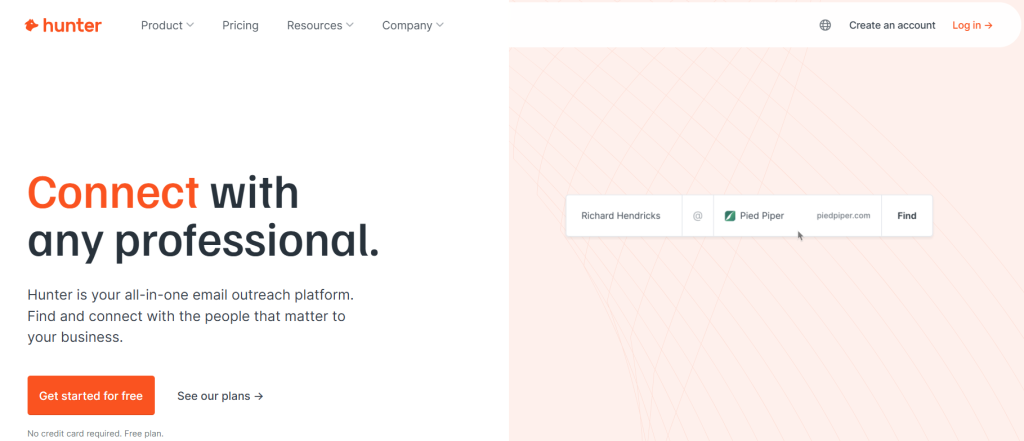
Hunter is one of the most reliable extractors on the market. You can search by company website, upload local files, or use its Chrome add-on to collect addresses while browsing.
It’s easy to connect with CRMs or export results straight into Google Sheets. Hunter’s key features include:
- domain search,
- email verification,
- and a free version with 25 searches per month.
2. Snov.io
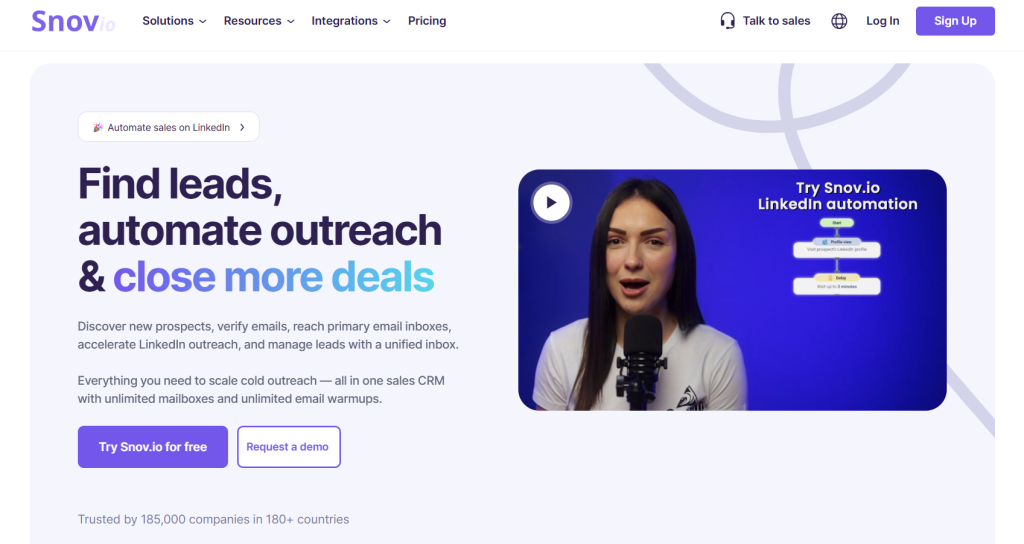
Snov.io helps you find leads across domains and social profiles. It includes an integrated verifier and bulk export option, so you can keep your data organized for large campaigns.
Its easy to use interface makes it popular among small businesses running email services or cold outreach programs. The tool has both paid plans and a free plan for light users.
3. Apollo.io

Apollo goes beyond simple scraping. It’s built for high-volume prospecting and connects directly with:
- CRMs,
- outreach tools,
- and analytics dashboards.
Users can easily manage lists, as well as filter by title or company size, and even start campaigns within the same platform. The enterprise plan includes advanced features like intent data and automation workflows.
4. Voila Norbert
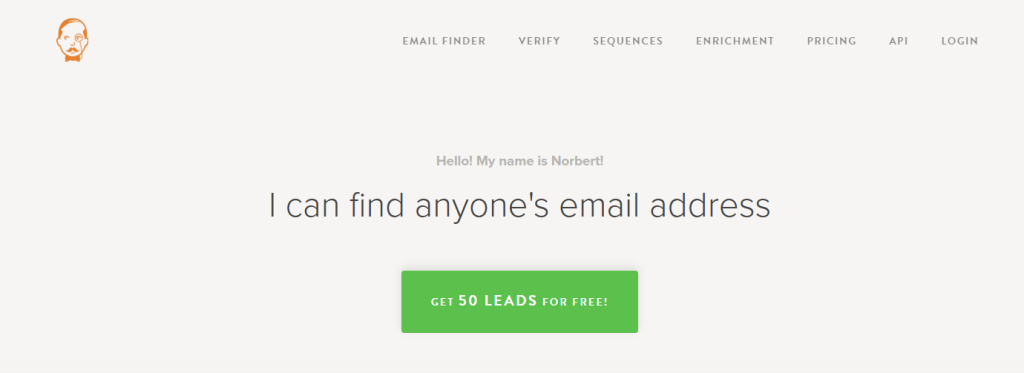
Voila Norbert focuses on accuracy. You upload a list, and the tool searches for valid emails using multiple databases.
It works best for smaller, targeted projects. The premium plan adds bulk searches and multiple integrations, which makes it useful for both startups and larger teams.
5. FindThatLead
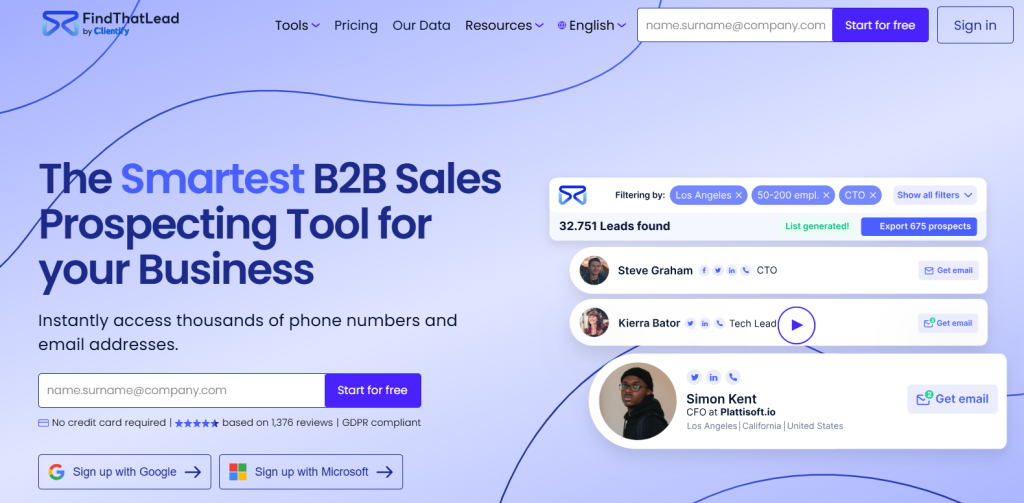
This tool is a nice pick for marketing purposes and quick lead generation. It pulls contacts by domain or keyword and includes an email verification feature. The interface is simple, with essential features like:\
- bulk leads search,
- campaign organization,
- and export options.
It’s fantastic for users who want something light and dependable without touching the source code.
These solutions keep extraction transparent, limit risky scraping, and help you move from data to real connections. For most teams, they’re more than enough to build a clean list without crossing compliance lines. Plus, they integrate easily with tools that take care of the next step: outreach.
Why extracting alone won’t generate revenue
I’ve seen many teams fall into the same trap. They extract bulk emails, export a list, and think the hard part is done. But extraction is only the first move in a much longer process. A spreadsheet full of unlimited emails doesn’t mean much if you don’t know who those people are or what they care about.
Even the best tools with premium features can’t fix poor data or missing context. Without verification and enrichment, many addresses lead nowhere. Some bounce. Others belong to companies outside your target market. That’s why cleaning, segmenting, and researching each contact is what actually turns a list into something useful.
Once you have valid emails, the next step is personalization. Cold outreach isn’t about volume but relevance. If your messages sound generic, your response rates stay low, no matter how many contacts you add.
Think of extraction as your foundation. You still need structure.
- Verify addresses to protect deliverability.
- Enrich contact data with job titles or industries.
- Write short, human messages that match real business needs.
- Track opens and replies to learn what works.
When you do that, extraction becomes part of a full system instead of a shortcut. It supports your sales team by strengthening your domain reputation and helping you connect with real people instead of chasing numbers.
So yes, email extraction helps you start fast. But to grow, you need strategy, testing, and follow-up. The goal isn’t to collect the most addresses but to find the right ones and build something real with them.
How to turn extracted emails into a pipeline
Once you’ve collected and cleaned your list, it’s time to put it to work. This is where outreach tools come in and where a platform like Woodpecker makes all the difference.
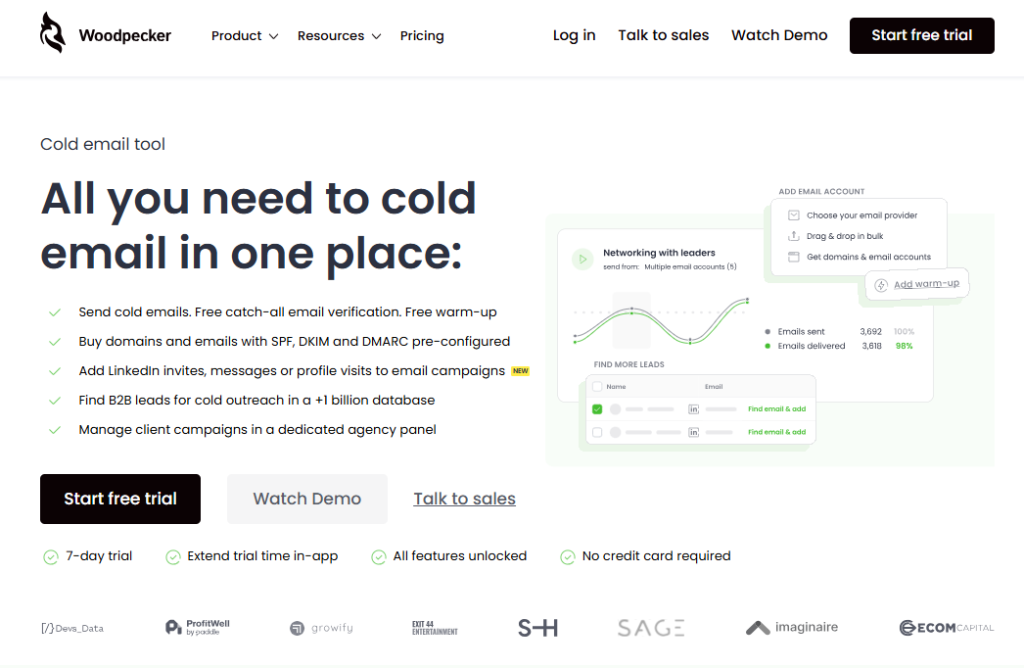
Woodpecker isn’t another extractor. It’s built to turn verified email addresses into real conversations.
After you import your list, the tool helps you write, send, and track cold email campaigns that sound personal, not automated. You can start small (maybe 50 messages a day) and grow safely over time.
Here’s how most teams do it:
- Upload a CSV of your valid emails.
- Warm up your domain automatically before sending.
- Add short follow-ups that stop when someone replies.
- Track opens, clicks, and replies in real time.
- Keep your sales team focused on people who actually respond.
The best part is control. You can connect multiple inboxes, set custom schedules, and even add LinkedIn messages or profile visits to your sequences. Everything happens in one dashboard, so you can easily manage campaigns without jumping between tools.
Woodpecker’s premium features, such as adaptive sending, inbox rotation, and deliverability monitoring, keep your outreach safe even at higher volumes. And if you want to verify your list again before sending, the platform includes free email verification built right in.
For small businesses, the pricing is simple too. There’s a free trial, and plans start at a fraction of what you’d spend hiring an agency. You can send unlimited emails from different accounts and stay compliant with GDPR and CAN-SPAM.
That’s how extracted data becomes a real sales system: one part extraction, one part automation, and a lot of care in between.
With the right balance, your email campaigns turn from cold lists into warm leads, and from random addresses into paying customers.
Conclusion
Email extractors are powerful, but only when you treat them as part of a bigger plan. They help you find leads and start email campaigns faster. But the real progress comes after that when you clean, verify, and personalize your outreach.
Even the best email extraction tools can’t replace a clear message or a real conversation. You can pull thousands of valid emails, but if your follow-up isn’t thoughtful, those contacts go cold fast.
That’s where Woodpecker steps in. It helps you take your verified list, send smart follow-ups, and keep your deliverability safe. You can test what works and track replies. All from one clean dashboard.
So when you’re ready to go beyond extraction, start your first outreach in Woodpecker. Build your own system to connect with real people and turn email lists into real sales opportunities.
👉 Start your free trial and see how outreach should feel when it’s done right.

